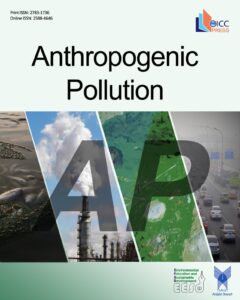The relationship between cadmium pollution, soil biology, and Atropa belladonna growth
Authors
-
Maria Del Carmen Delgado Laime
*
 1
1
-
Cesar Ruben Castro Lopez
 2
2
-
Roger Oswaldo Poccohuanca-Aguilar
 3
3
-
Juan-Jesus Garrido-Arismendis
 4
4
-
Linda-Katherine Carrillo-De la Cruz
 5
5
Abstract
Cadmium, a heavy metal, can have devastating effects on the activity and composition of soil organisms. This can lead to environmental pollution which can be detrimental to human health. In order to evaluate the quality of contaminated soils, microbial parameters are used. The Atropa belladonna was used in a factorial experiment to investigate the efficacy of green purification and the role of arbuscular root fungi and growth-promoting bacteria in reducing the effects of cadmium. The experiment included two factors: cadmium at four levels (0, 20, 50 and 100 mg/kg of soil) and microbial inoculation treatment at three levels (control, plant growth promoting rhizobacteria and arbuscular mycorrhizal fungi). The study found that an increase in soil cadmium pollution caused a significant increase in shoot cadmium concentration and metabolic rate. Cadmium also caused a significant decrease in shoot function, microbial biomass carbon, microbial respiration, substrate-stimulated respiration, Plant growth promoting rhizobacteria population and mycorrhizal symbiosis. However, the inoculation of microbial treatments to the soil was found to decrease the inhibition effects of cadmium on the measured indicators. Overall, the results of the study showed that using growth-promoting microorganisms can reduce the adverse effect of cadmium on plant growth and microbial indicators of soil quality in soils contaminated with cadmium. Therefore, the application of growth-promoting microorganisms represents a promising approach for the remediation of cadmium-contaminated soils, as it not only supports plant growth but also enhances the overall quality of soil ecosystems.



